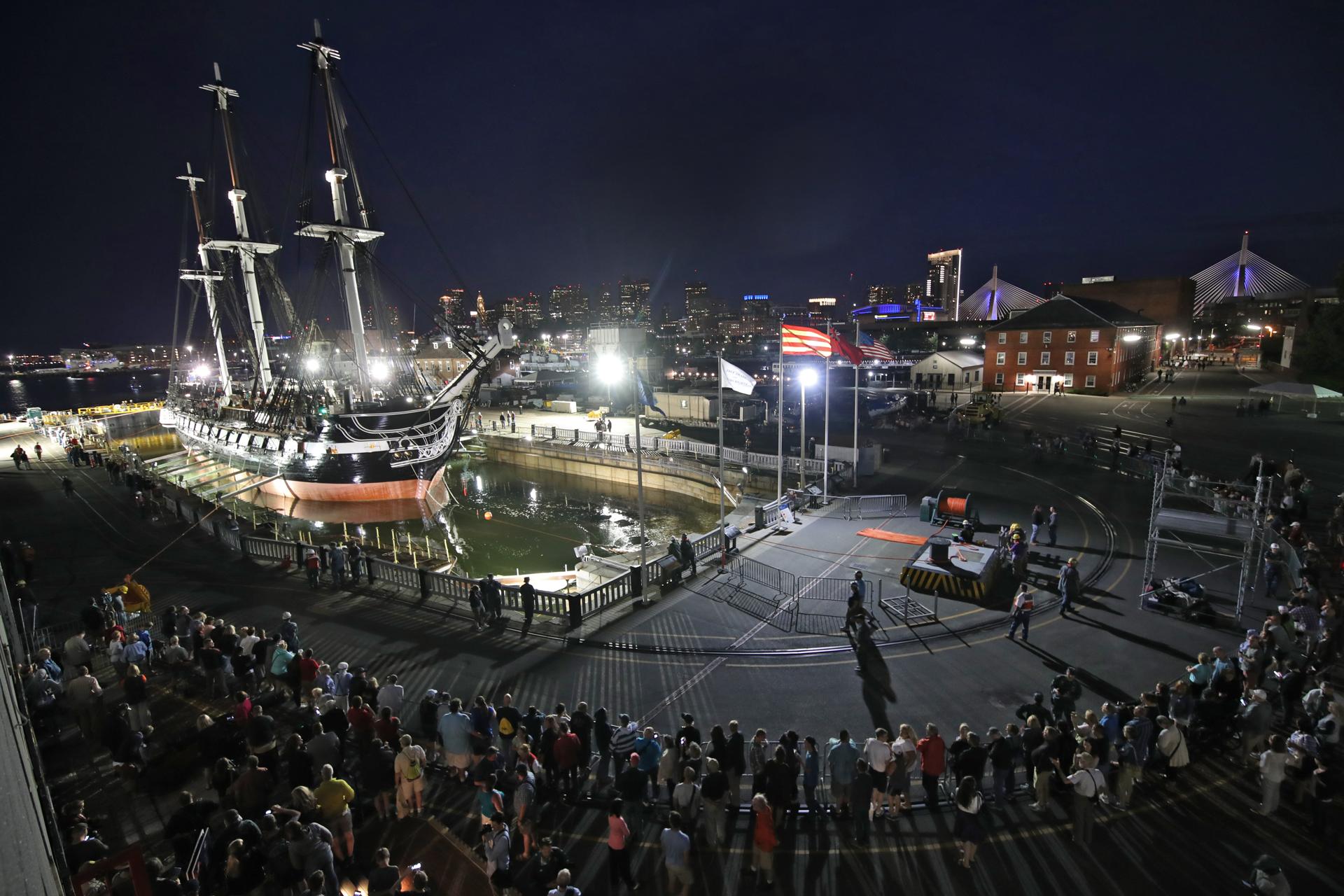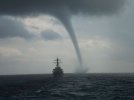-
Please take a moment and update your account profile. If you have an updated account profile with basic information on why you are on Air Warriors it will help other people respond to your posts. How do you update your profile you ask?
Go here:
Edit Account Details and Profile
You are using an out of date browser. It may not display this or other websites correctly.
You should upgrade or use an alternative browser.
You should upgrade or use an alternative browser.
Ship Photo of the Day
- Thread starter Randy Daytona
- Start date
Sea trials cancelled. There's a guard rail blocking the ski jump. Back to the drawing board.
Why do you hate safety??Sea trials cancelled. There's a guard rail blocking the ski jump. Back to the drawing board.
Seeing that F-35 there with the guardrail in place reminds me of the Army or Marine infantry guys (can't remember which) who tried to take a badass moto picture of themselves piling out the back of a helo.Sea trials cancelled. There's a guard rail blocking the ski jump. Back to the drawing board.
The helo was chocked and chained, and they had blank firing adapters on their rifles.

Also, isn't that F-35 fake? I don't see a fan door, the canopy is the wrong color, and the rest just looks wrong. Maybe a firefighting mock-up?
Also, isn't that F-35 fake? I don't see a fan door, the canopy is the wrong color, and the rest just looks wrong. Maybe a firefighting mock-up?
Probably is fake, maybe an air show mockup for flight deck footprint checks and such. Wonder if they're actually doing any actual training (firefighting, aircraft handling, etc) yet?
USS Alaska (CB-1). Designed to take out heavy cruisers or even pocket battleships, it was a tweener - as evidenced by the name (battleships were named after states, cruisers after cities - the 6 ships of the Alaska class were named after territories: Alaska, Guam, Hawaii, Philippines, Puerto Rico, Samoa - only Alaska and Guam were completed). Some call it a battlecruiser, others more correctly call it a large cruiser. The layout was an enlarged Baltimore class with protection against gunfire but almost none against torpedoes - also had the running gear of the Essex class carriers and were able to achieve 33 knots. What set the ship apart was the main armament: not the 8" cannons of heavy cruisers nor the 16" main guns of contemporary US battleships but a newly designed, magnificent 12" rifle hurling an 1140 lb shell at a velocity that made it as powerful as the 14" main guns of the Pennsylvania.
The Alaskas were 808 ft long with a beam of 91 feet and a full load tonnage of just over 34,000.
Interestingly, one of the biggest arguments is how the Alaska and Guam would have stacked up against the Scharnhorst and Gneisenau. The 38,000 ton German battleships had thicker armor but their 11" cannons fired a substantially smaller 727 lb shell.
https://en.wikipedia.org/wiki/Alaska-class_cruiser
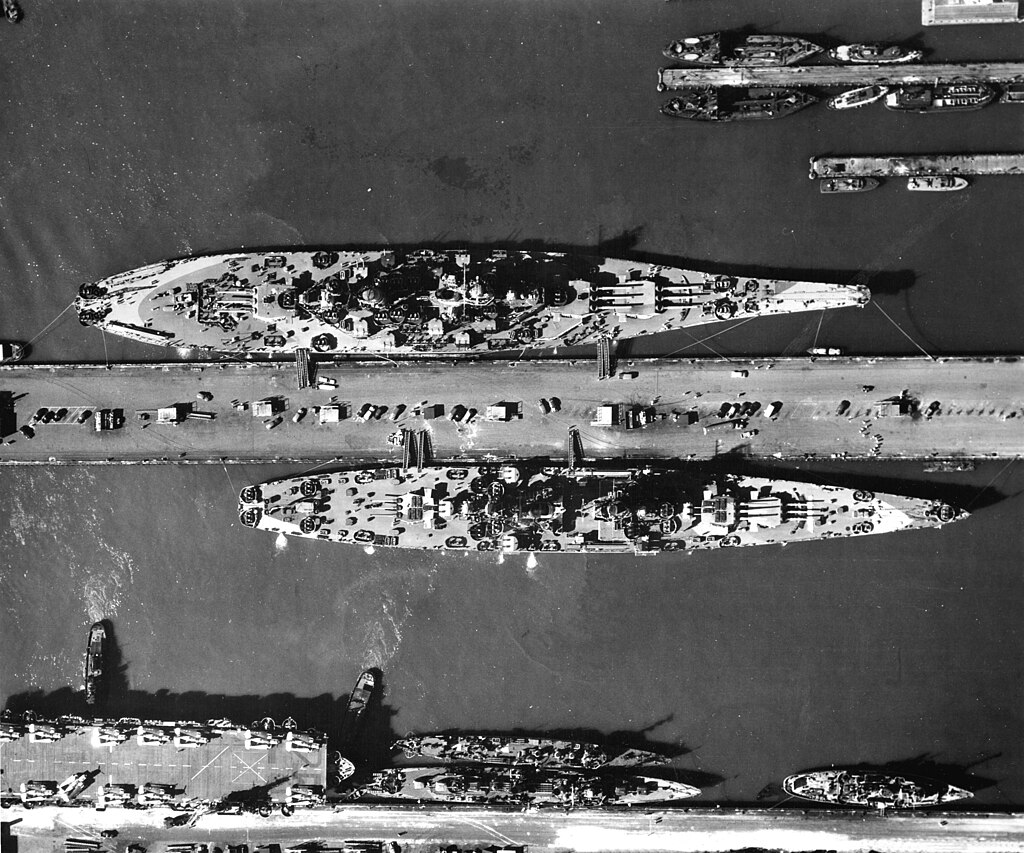
The Iowa-class battleship Missouri (top) and Alaska moored at the same pier, showing their difference in size

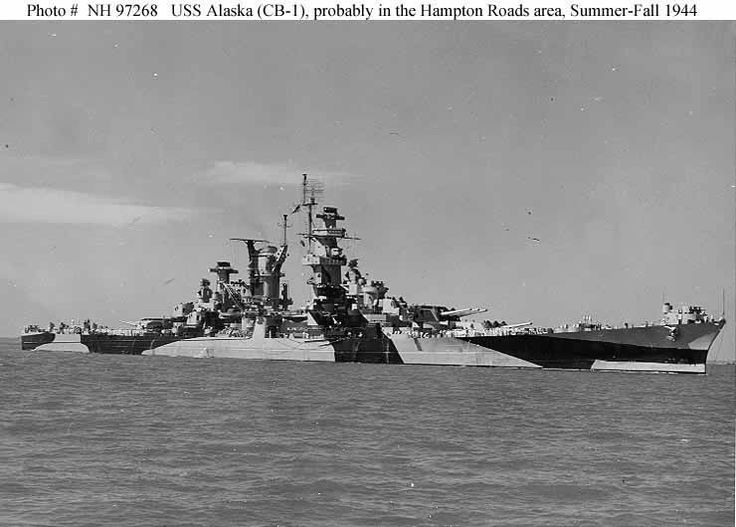
The Alaskas were 808 ft long with a beam of 91 feet and a full load tonnage of just over 34,000.
Interestingly, one of the biggest arguments is how the Alaska and Guam would have stacked up against the Scharnhorst and Gneisenau. The 38,000 ton German battleships had thicker armor but their 11" cannons fired a substantially smaller 727 lb shell.
https://en.wikipedia.org/wiki/Alaska-class_cruiser

The Iowa-class battleship Missouri (top) and Alaska moored at the same pier, showing their difference in size


Pride of the British Fleet, "The Mighty Hood" Commissioned in 1920, she had a 860 ft length, 104 ft beam and 47,000 tons at full load. 144,000 HP gave her 32 knots when new, a little slower as she aged. Incorporating lessons from Jutland, armor was added on causing her to ride low in the water and was quite wet causing her to also be known as the "largest submarine in the navy" - but the constant dampness also led to an abnormally high rate of tuberculosis among her crew.
The main striking power was her 8 (4 x 2) 15" main guns throwing a 1900 lb shell at 2450 FPS - similar to the Bismarck's 15" guns 1800 lb shell at 2700 FPS. For comparison, the American and Japanese battleships were launching shells an order of magnitude bigger: the Iowa's superheavy 16" 2700 lb AP shell at 2500 FPS and the Yamato's 18" 3200 lb shell at 2600 FPS.
As known, the Hood went down after Bismarck's 5th salvo, catching a 15" shell in the magazines while turning 20 deg to port at speed - the ship went down in 3 minutes and only 3 crewmembers survived. 24 May 1941
Microsoft co-founder Paul Allen led an expedition to successfully recover the ship's bell from HMS Hood.
http://www.dailymail.co.uk/news/art...l-Allen-formally-unveiled-Princess-Royal.html
https://en.wikipedia.org/wiki/HMS_Hood
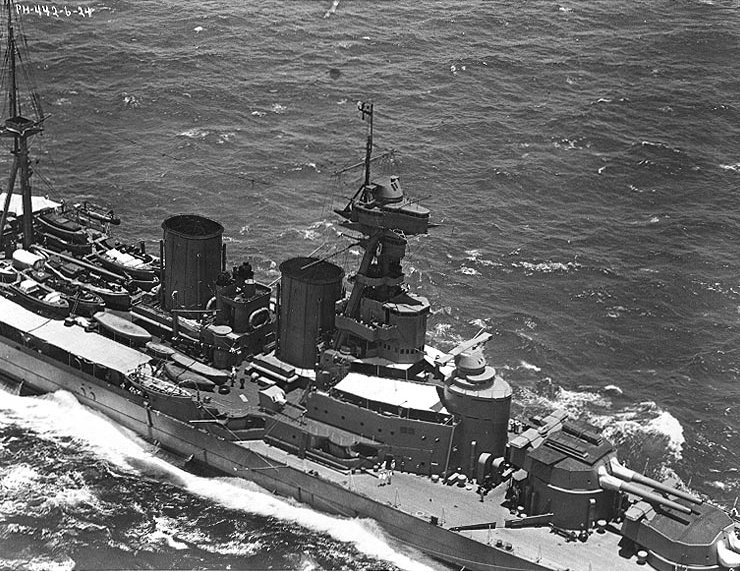
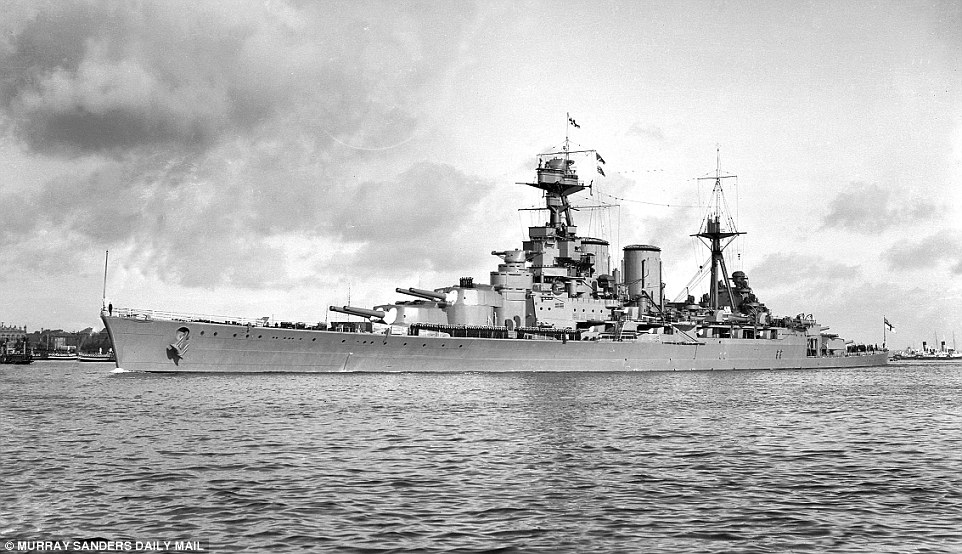
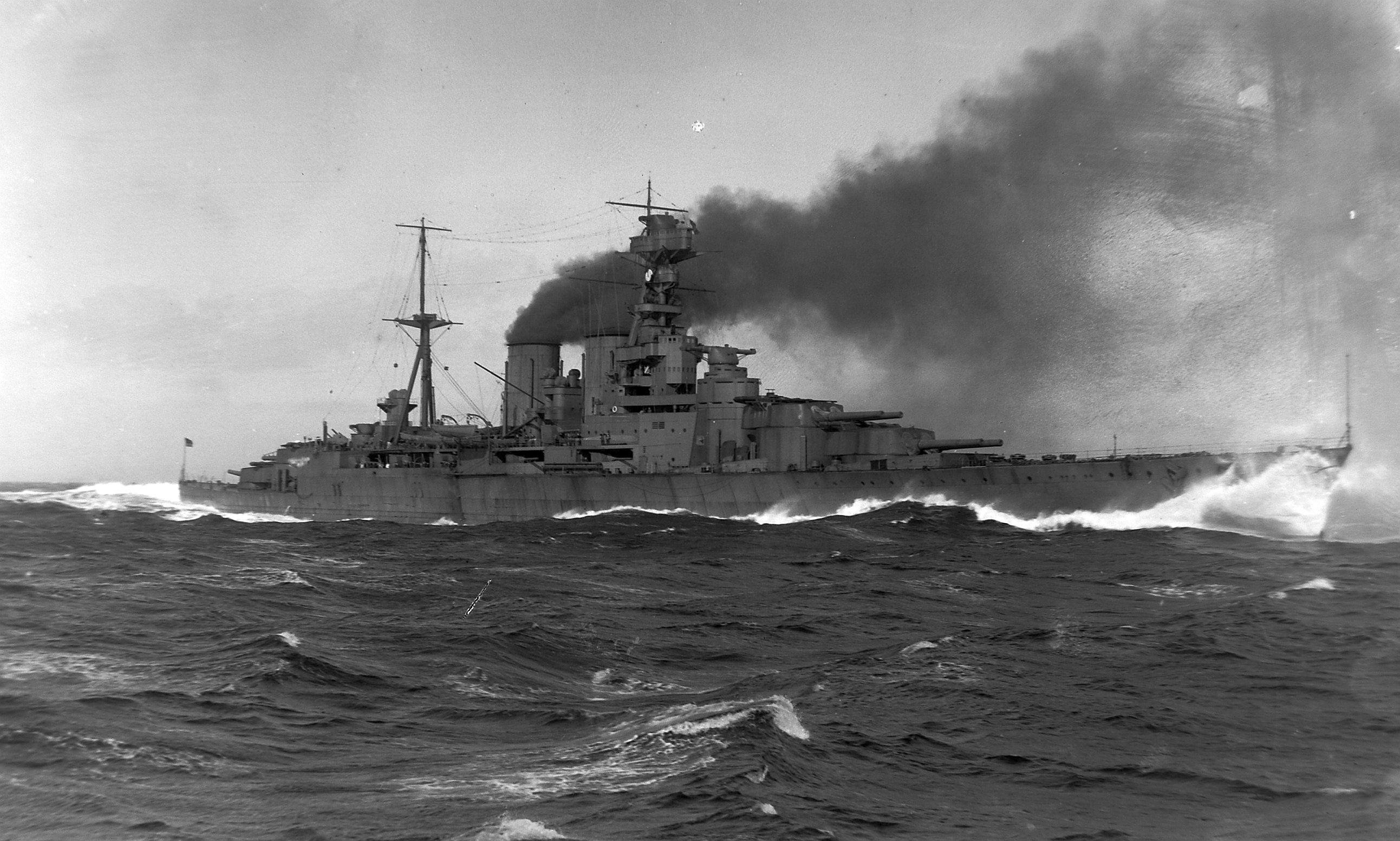
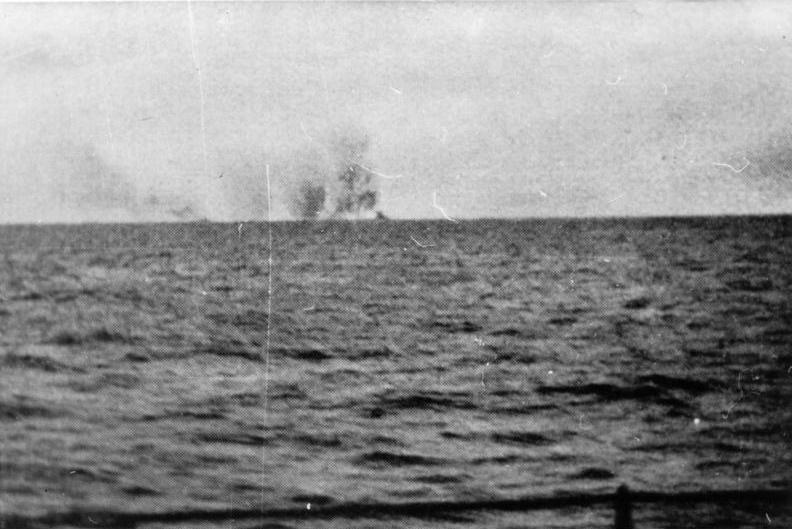
Hood during and after the explosion; sketch prepared by Captain JC Leach (commanding Prince of Wales) for the second board of enquiry in 1941, and photo from the Bundesarchiv. The column of smoke or flame that erupted from the vicinity of the mainmast (immediately before a huge detonation obliterated the after part of the ship from view) is believed to have been the result of a cordite fire venting through the engine-room ventilators.

The main striking power was her 8 (4 x 2) 15" main guns throwing a 1900 lb shell at 2450 FPS - similar to the Bismarck's 15" guns 1800 lb shell at 2700 FPS. For comparison, the American and Japanese battleships were launching shells an order of magnitude bigger: the Iowa's superheavy 16" 2700 lb AP shell at 2500 FPS and the Yamato's 18" 3200 lb shell at 2600 FPS.
As known, the Hood went down after Bismarck's 5th salvo, catching a 15" shell in the magazines while turning 20 deg to port at speed - the ship went down in 3 minutes and only 3 crewmembers survived. 24 May 1941
Microsoft co-founder Paul Allen led an expedition to successfully recover the ship's bell from HMS Hood.
http://www.dailymail.co.uk/news/art...l-Allen-formally-unveiled-Princess-Royal.html
https://en.wikipedia.org/wiki/HMS_Hood




Hood during and after the explosion; sketch prepared by Captain JC Leach (commanding Prince of Wales) for the second board of enquiry in 1941, and photo from the Bundesarchiv. The column of smoke or flame that erupted from the vicinity of the mainmast (immediately before a huge detonation obliterated the after part of the ship from view) is believed to have been the result of a cordite fire venting through the engine-room ventilators.

The USNS Lewis B. Puller, named after the famous Marine "Chesty" Puller, is the first of three planned Expeditionary Mobile Bases. The ship measures 764-feet long, 164-feet wide, and displaces a whopping 78,000 tons.
https://news.usni.org/2017/07/12/expeditionary-sea-base
http://www.thedrive.com/the-war-zon...new-sea-base-is-on-its-way-to-the-middle-east
http://www.thedrive.com/the-war-zone/5829/americas-huge-afloat-forward-staging-base-in-action


https://news.usni.org/2017/07/12/expeditionary-sea-base
http://www.thedrive.com/the-war-zon...new-sea-base-is-on-its-way-to-the-middle-east
http://www.thedrive.com/the-war-zone/5829/americas-huge-afloat-forward-staging-base-in-action


If they were an order of magnitude bigger, they'd need to have weighed 19,000 lbs.The main striking power was her 8 (4 x 2) 15" main guns throwing a 1900 lb shell at 2450 FPS - similar to the Bismarck's 15" guns 1800 lb shell at 2700 FPS. For comparison, the American and Japanese battleships were launching shells an order of magnitude bigger: the Iowa's superheavy 16" 2700 lb AP shell at 2500 FPS and the Yamato's 18" 3200 lb shell at 2600 FPS.

250 posts and not one yet of the most famous ship of all time - HMS Titanic. One of the 3 Olympic class ocean liners, these ships built in the early 1910's - Olympic (1911), Titanic (1912 and Britannic (1914) were nearly the size of the Iowa class battleships with a length of 882 ft, beam of 92 ft and displacement of 52,000 tons. 59,000 HP gave them a maximum speed of 24 knots.
Of note on propulsion, Propulsion was achieved through three propellers: two outboard or wing propellers had three blades, while the central propeller had four. The two lateral propellers were powered by reciprocating steam triple expansion, while the central shaft was driven by a steam turbine.[23] All power on board was derived from a total of 29 coal-fired steam boilers in six compartments. However, Olympic's boilers were adapted for firing by oil at the end of the First World War,[24] which reduced the number of engine crew required from 350 to 60.
https://en.wikipedia.org/wiki/RMS_Titanic
One wonders how many people could have been saved if the SS Californian had rendered assistance. https://en.wikipedia.org/wiki/SS_Californian
Some have suggested that a coal fire prior to departing port severely weakened the hull and contributed to the sinking.
A Coal Fire May Have Helped Sink the ‘Titanic’
A new documentary claims the Titanic’s hull was weakened before it struck an iceberg
Read more: http://www.smithsonianmag.com/smart...d-sink-titanic-180961699/#4R6RBvfs7bfaxC8g.99
Perhaps the unluckiest person on the ship (or the luckiest depending on your viewpoint) was White Star line stewardess / nurse Violet Jessop, who survived a collision on the Olympic in 1911, the sinking of the Titanic in 1912 and the sinking of the Britannic in 1916.
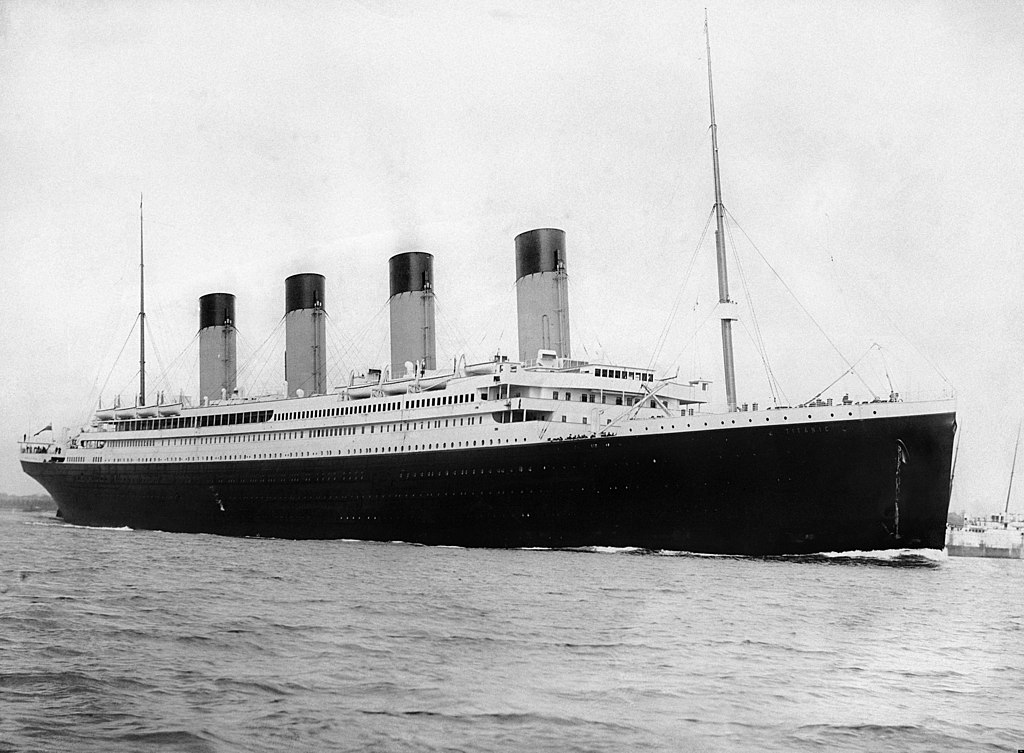
RMS Titanic departing Southampton on April 10, 1912.
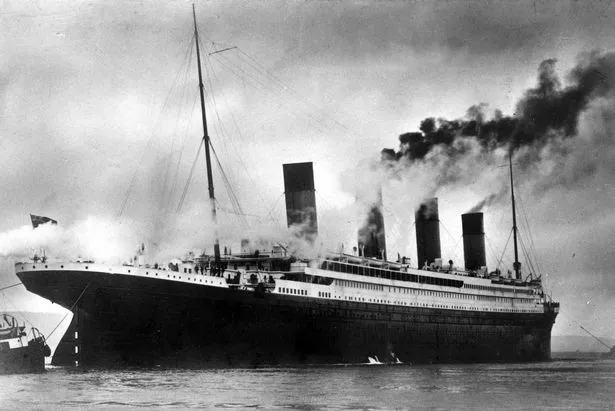
Very good movie - no, not that movie, but rather Saving the Titanic, a British film from 2012 from the viewpoint of those engineers and crew who knew they were doomed but fought on.
And the book that made author Clive Cussler famous, Raise the Titanic!
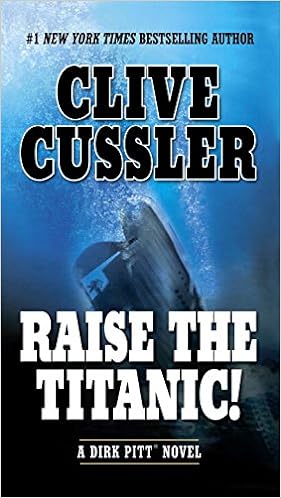
Of note on propulsion, Propulsion was achieved through three propellers: two outboard or wing propellers had three blades, while the central propeller had four. The two lateral propellers were powered by reciprocating steam triple expansion, while the central shaft was driven by a steam turbine.[23] All power on board was derived from a total of 29 coal-fired steam boilers in six compartments. However, Olympic's boilers were adapted for firing by oil at the end of the First World War,[24] which reduced the number of engine crew required from 350 to 60.
https://en.wikipedia.org/wiki/RMS_Titanic
One wonders how many people could have been saved if the SS Californian had rendered assistance. https://en.wikipedia.org/wiki/SS_Californian
Some have suggested that a coal fire prior to departing port severely weakened the hull and contributed to the sinking.
A Coal Fire May Have Helped Sink the ‘Titanic’
A new documentary claims the Titanic’s hull was weakened before it struck an iceberg
Read more: http://www.smithsonianmag.com/smart...d-sink-titanic-180961699/#4R6RBvfs7bfaxC8g.99
Perhaps the unluckiest person on the ship (or the luckiest depending on your viewpoint) was White Star line stewardess / nurse Violet Jessop, who survived a collision on the Olympic in 1911, the sinking of the Titanic in 1912 and the sinking of the Britannic in 1916.

RMS Titanic departing Southampton on April 10, 1912.

Very good movie - no, not that movie, but rather Saving the Titanic, a British film from 2012 from the viewpoint of those engineers and crew who knew they were doomed but fought on.
And the book that made author Clive Cussler famous, Raise the Titanic!

don't forget that 'Raise the Titanic' was also a movie for those of us too lazy to read.250 posts and not one yet of the most famous ship of all time - HMS Titanic. One of the 3 Olympic class ocean liners, these ships built in the early 1910's - Olympic (1911), Titanic (1912 and Britannic (1914) were nearly the size of the Iowa class battleships with a length of 882 ft, beam of 92 ft and displacement of 52,000 tons. 59,000 HP gave them a maximum speed of 24 knots.
Of note on propulsion, Propulsion was achieved through three propellers: two outboard or wing propellers had three blades, while the central propeller had four. The two lateral propellers were powered by reciprocating steam triple expansion, while the central shaft was driven by a steam turbine.[23] All power on board was derived from a total of 29 coal-fired steam boilers in six compartments. However, Olympic's boilers were adapted for firing by oil at the end of the First World War,[24] which reduced the number of engine crew required from 350 to 60.
https://en.wikipedia.org/wiki/RMS_Titanic
One wonders how many people could have been saved if the SS Californian had rendered assistance. https://en.wikipedia.org/wiki/SS_Californian
Some have suggested that a coal fire prior to departing port severely weakened the hull and contributed to the sinking.
A Coal Fire May Have Helped Sink the ‘Titanic’
A new documentary claims the Titanic’s hull was weakened before it struck an iceberg
Read more: http://www.smithsonianmag.com/smart...d-sink-titanic-180961699/#4R6RBvfs7bfaxC8g.99
Perhaps the unluckiest person on the ship (or the luckiest depending on your viewpoint) was White Star line stewardess / nurse Violet Jessop, who survived a collision on the Olympic in 1911, the sinking of the Titanic in 1912 and the sinking of the Britannic in 1916.

RMS Titanic departing Southampton on April 10, 1912.

Very good movie - no, not that movie, but rather Saving the Titanic, a British film from 2012 from the viewpoint of those engineers and crew who knew they were doomed but fought on.
And the book that made author Clive Cussler famous, Raise the Titanic!

Heard a lecture years ago from a forensic Naval Architect that pointed to the poor quality of the rivets that resulted in the the damage to the hull.
That seems to be the going theory . . . coupled with watertight bulkheads that weren't. Unlike the chick's legs in Hot Shots, they didn't go all the way up. Flood too many at once, and the water would make the ship pitch down enough to flood the next compartment, and the next, and so on. The gash the iceberg put in the hull wasn't big vertically. But it was long enough to both overwhelm the pumps and flood too many compartments at once.don't forget that 'Raise the Titanic' was also a movie for those of us too lazy to read.
Heard a lecture years ago from a forensic Naval Architect that pointed to the poor quality of the rivets that resulted in the the damage to the hull.

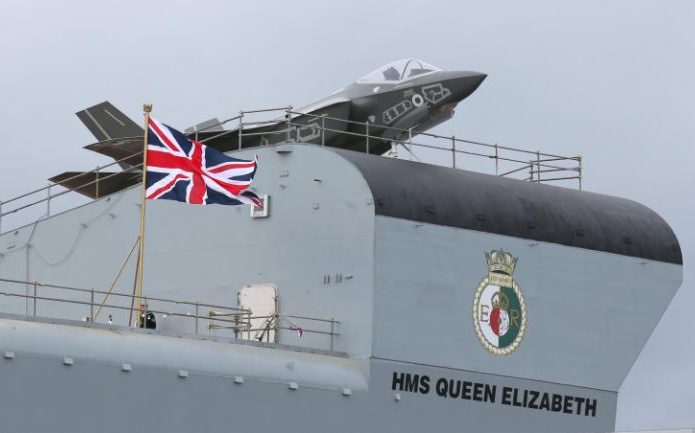 HMS Queen Elizabeth sets sail from Rosyth for sea trials
HMS Queen Elizabeth sets sail from Rosyth for sea trials